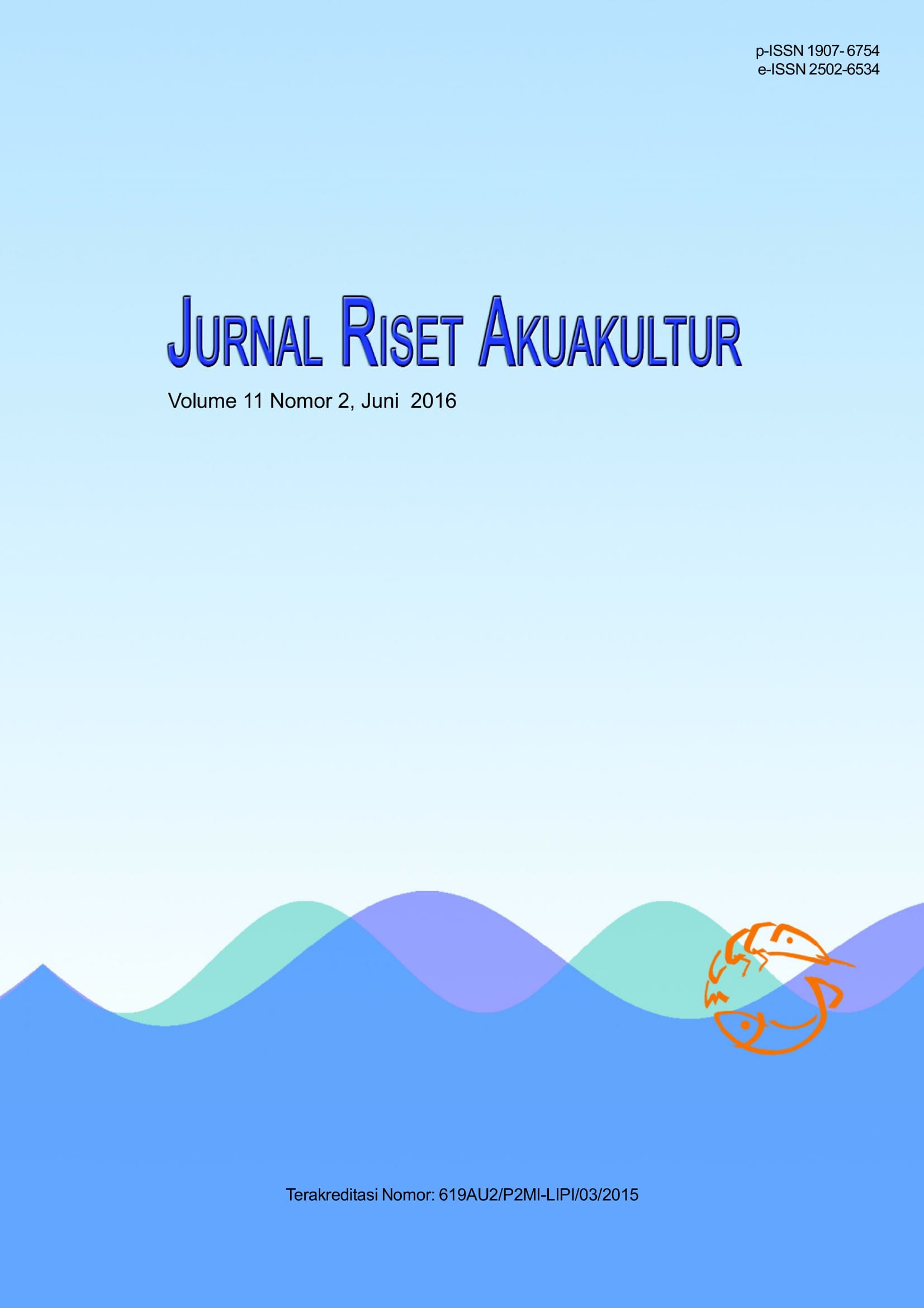BARCODING DNA IKAN HIAS LAHAN GAMBUT
DOI:
https://doi.org/10.15578/jra.11.2.2016.137-145Keywords:
barcoding DNA, ikan hias, lahan gambut, keragaman genetik, DNA barcoding, ornamental fish, peat land, genetic diversityAbstract
Perairan gambut merupakan ekosistem unik yang memiliki kekayaan biodiversitas ikan, sebagian besar di antaranya memiliki potensi sebagai ikan hias. Penelitian ini dilakukan untuk melakukan identifikasi dan analisis keragaman genetik, karakter genetik, jarak genetik, dan pohon kekerabatan ikan-ikan yang mendiami perairan gambut Cagar Biosfere Bukit Batu Provinsi Riau. Tahap pertama penelitian ini adalah identifikasi secara morfologi terhadap 29 ikan hasil koleksi yang potensial sebagai ikan hias. Selanjutnya amplifikasi dan alignment 675 bp (base pair) dari 90 runutan parsial cytochrome c oxidase subunit 1 (COI). Hasil penelitian menunjukkan ikan yang diidentifikasi dapat dikelompokkan menjadi enam famili, yaitu Balontidae terdiri atas tiga spesies (12,5%); Cyprinidae 13 spesies (54,17%); Cobitidae satu spesies (4,17%); Siluridae dua spesies (8,3%); Datnoidae satu spesies (4,17%); dan Bagridae empat spesies (16,67%). Beberapa spesies memiliki perbedaan genetik intraspesies lebih dari 3%. Analisis kekerabatan dan clustering ikan hias lahan gambut berdasarkan gen COI memiliki nilai bootstrap 87-99 per ulangan.
Peat is a unique ecosystem which a high fish biodiversity, and most of them are potential as ornamental fish. This research was conducted to identify and analyze genetic diversity, genetic code, genetic distances, and phylogenies of the fish that inhabit in the Bukit Batu Biosfere Reserves, Riau Province. The first stage of this study was identification of 29 fish species that potential as ornamental fish by using morphological character. The further stages were amplification and alignment of 675 base pairs of 90 partial sequences of cytochrome c oxidase subunit 1 (COI). Results showed that the identification based on COI could be classified into six families. These Families were Balontidae, Cyprinidae, Cobitidae, Siluridae, Datnoidae, and Bagridae which consist of three species (12.5%), 13 species (54.17%), one species (4.17%), two species (8.3%), one species (4.17%), and four species (16.67%), respectively. Some clustered have intra-species genetic divergence more than 3%. Phylogenetic and clustering analysis showed all of the OTU (0perational Taxonomic Unit) has a high bootstrap permutation of 87-99.
Downloads
Additional Files
Published
How to Cite
Issue
Section
License

Jurnal Riset Akuakultur is licensed under a Creative Commons Attribution-ShareAlike 4.0 International License.Â
